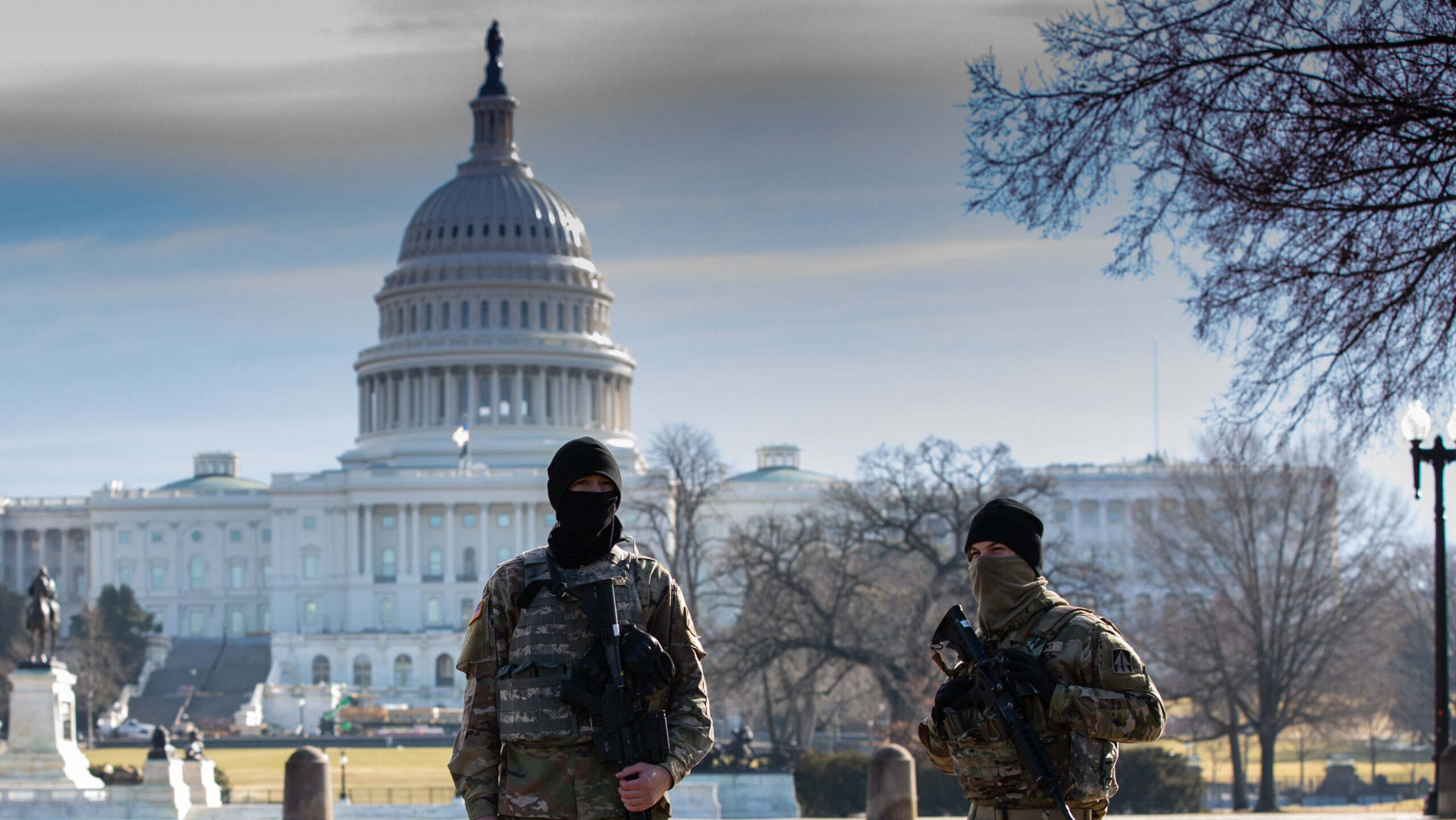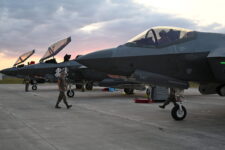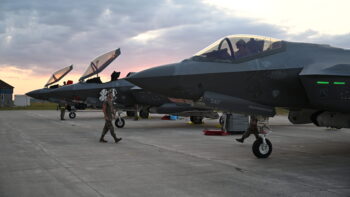
U.S. Army Spc. Austin Fry, right, an infantryman with Bravo Company, 1st Battalion, 152nd Infantry Regiment, and Spc. Elijah Cliver, an infantryman with Delta Company, 1st Battalion, 152nd Infantry Regiment, Indiana National Guard, provide security near the U.S. Capitol in Washington, Feb. 23, 2021. (U.S. Army National Guard photo by Sgt. 1st Class R.J. Lannom Jr.)
WASHINGTON — After months of haggling, negotiating and political brinksmanship, the Senate finally passed the nearly $900 billion National Defense Authorization Act for Fiscal Year 2024 late today, which sailed through with an 87 to 13 vote.
The bill now heads to the House, where it’s likely to face partisan headwinds but, if successful, will go on to President Joe Biden’s desk for his signature.
On Tuesday, the White House threw its weight behind the modified bill that at $886 billion is tens of billions more than it requested, saying it “continues to strengthen our national defense, supports our dedicated troops and their families, and reinforces our alliances and partnerships around the world.”
Among the key provisions in the NDAA, according to the conference version, are several related to the Australia-UK-US trilateral security arrangement known as AUKUS. The NDAA, for example, authorizes the Defense Department to transfer up to three Virginia-class submarines to Australia, but only after one year elapses from the date the legislation is passed. (Navy leadership has previously said the first transfer is not scheduled to occur until 2032.)
Elsewhere, the authorization bill largely keeps Army programs intact and provides the service with permission to spend additional dollars on a few key programs. It also saved some F-22s destined for the boneyard and requested more clarification for who’s doing what in the Pentagon’s sprawling JADC2 effort.
MORE: AUKUS, JADC2, planes and tanks: What’s in the draft $874.2B NDAA
But even getting the NDAA through the House next is not the end of the bureaucratic road for the Pentagon. While the NDAA traditionally includes funding tables, the DoD won’t receive a penny of that funding until both sides of Congress pass, and the president signs, the annual defense appropriations bill as well.
Lawmakers have come under increasing pressure to pass the annual defense policy and spending bills. Since the start of October, the Pentagon has been operating under a continuing resolution, or CR, meaning all programs receive funding levels on par with the previous year, and brand new programs, “new starts,” are prohibited from commencing — a situation that frustrates senior Pentagon officials annually.
In a letter to Senate Appropriations Committee chair Patty Murray, D-Wash. late last month, Gen. CQ Brown, the Chairman of the Joint Chiefs of Staff, outlined some top-level issues the Pentagon will face if Congress decides to go as far as to operate under a full-year CR.
“DoD has never operated under a year-long CR; it would be historically costly to the Joint Force. In a CR, the DoD’s actual buying power is significantly impacted and degraded,” Brown wrote in the letter. “As I have said previously, we cannot outpace our pacing challenge [China] while under a CR.”




















